Several of my recent explorations have been inspired by B&E Roberts. His Southeastern Explorations section well worth browsing, especially if you're from around these parts, and his photos are way better than mine. I scoured his site for places to explore, and I've got a bit of a backlog now, but in scouring his site, I also sort-of began to understand how he might decide what things to go looking for. Historical maps and bulletins from the early 1900's (available on Google Books) either describe or directly show the locations of all kinds of mills, factories, mines, and so forth. Then, there are also resources like the Etowah Valley Historical Society and Bartow Ancestors that do the same. Between them, the approximate locations of all kinds of old abandoned whatnot can be inferred. All that remains is to get out in the field and see if any part of said old abandoned whatnot remains.
So, in that spirit, I scoured some of the historical maps on my trails site, identified a few locations to check out, and hit the road.
The first was Marun's Mill. Old maps allege it to be (or have been) located in northern Cherokee County, on the south side of Salacoa Creek, on the north side of Garland Mountain. It looks like it's "behind" some private property though. It might be accessible from the Garland Mountain horse trails, but maps of that system don't show the trails going that far north. I wasn't too optimistic, but I checked it out anyway.
No luck. There was private property on the north side, or at least, the road got narrower and narrower, and though it wasn't marked private, it kind-of looked like it. At least it didn't look like something I should drive my truck down, in case it was private. Maybe the road bike. From the sorth, the Garland Mountain Sporting Clays club seemed to own the land between the end of the road and that part of the mountain. They're open to the public though. Maybe I could give them a call...
Next.
The same map alleges an unnamed mill, a bit east, on Little Creek, near where it joins Salacoa.
When I pulled up, I was optimistic. There was a bit of a parking area. The woods were clear, all the way down to the creek. It looked like a popular place.
There was a little dam across the creek, though I doubt it had anything to do with the mill
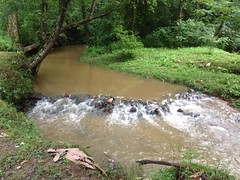
There were a couple of campfire rings, and some swings over the creek.

But I looked all over, even under the bridge nearby...
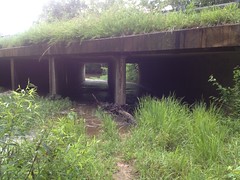
...and there was no trace of any old mill. Dangit.
It's not impossible that there was something on the other side of the creek, obscured by overgrowth. In fact, there was a large amount of it, right where a structure ought to be, but it was raining, the creek was high, I wasn't wearing the right pants or shoes to cross it...
Hmm...
I would need to come back in the winter, properly dressed.
I'd seen several Such-and-Such Mill Roads on the map while looking at how to get to those two, so I went and checked them out too.
The first was Irwin Mill Road. At the west end, there was a small-scale lumber mill in present operation. There was a quarry just up the road, and the rest of the road wound around through some sketchy cliffs with multiple signs telling you to watch out for falling rock.
No ruins were visible along the length of the road though. But, again, the undergrowth was dense. I needed to come back in the winter.
The next was Riddle Mill Road. What a road! It's 1-vehicle wide, way below grade for most of its length, and, oddly enough, paved. It winds through all manner of old farms, but at the only spot that it crosses a creek, there's nothing visible. But, as before, I really couldn't see that far up or downstream, and I needed to look again in the winter.
Blah!
Winter. Winter is the friend of anyone looking for old structures in the woods. That was the lesson of the day.
I did run into the old Mahan cemetery while I was out and about though.
There were some very old, worn-away stones there.
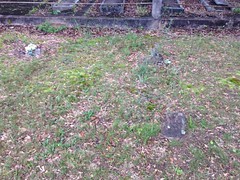
And a section interring a family - mother, father, and at least 6 children, all of whom died at birth or within the first year.
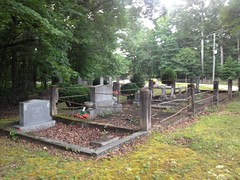
Can you imagine? I'd seen a similar section of the Bynum Cemetery near Willis Knob. I'd learned in school how much was done in the 20'th century to combat infant mortality, but seeing evidence in cemeteries like these makes it seem a lot more real.
More older stones...
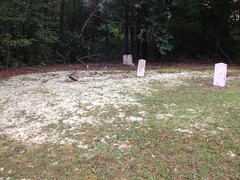
This gentleman was born in the 1700's!
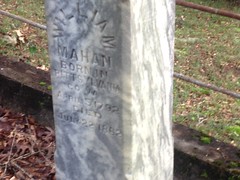
It was the oldest stone I could find that wasn't worn away.
And that was it.
I did find some great roads that made me want to get up there on my road bike. But, I really struck out on the old-structures-in-the-woods front.
Winter! Maybe this winter.



No comments:
Post a Comment